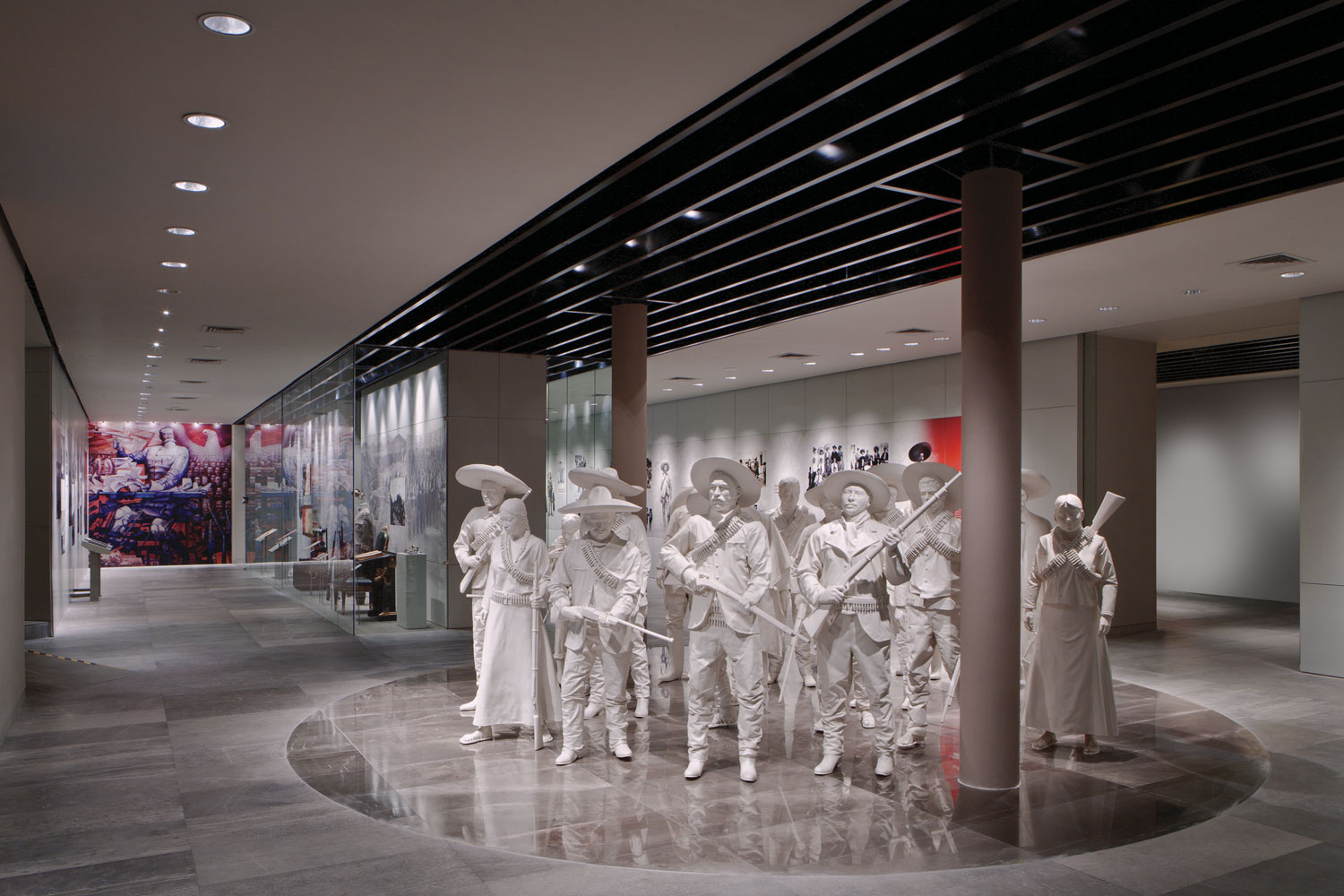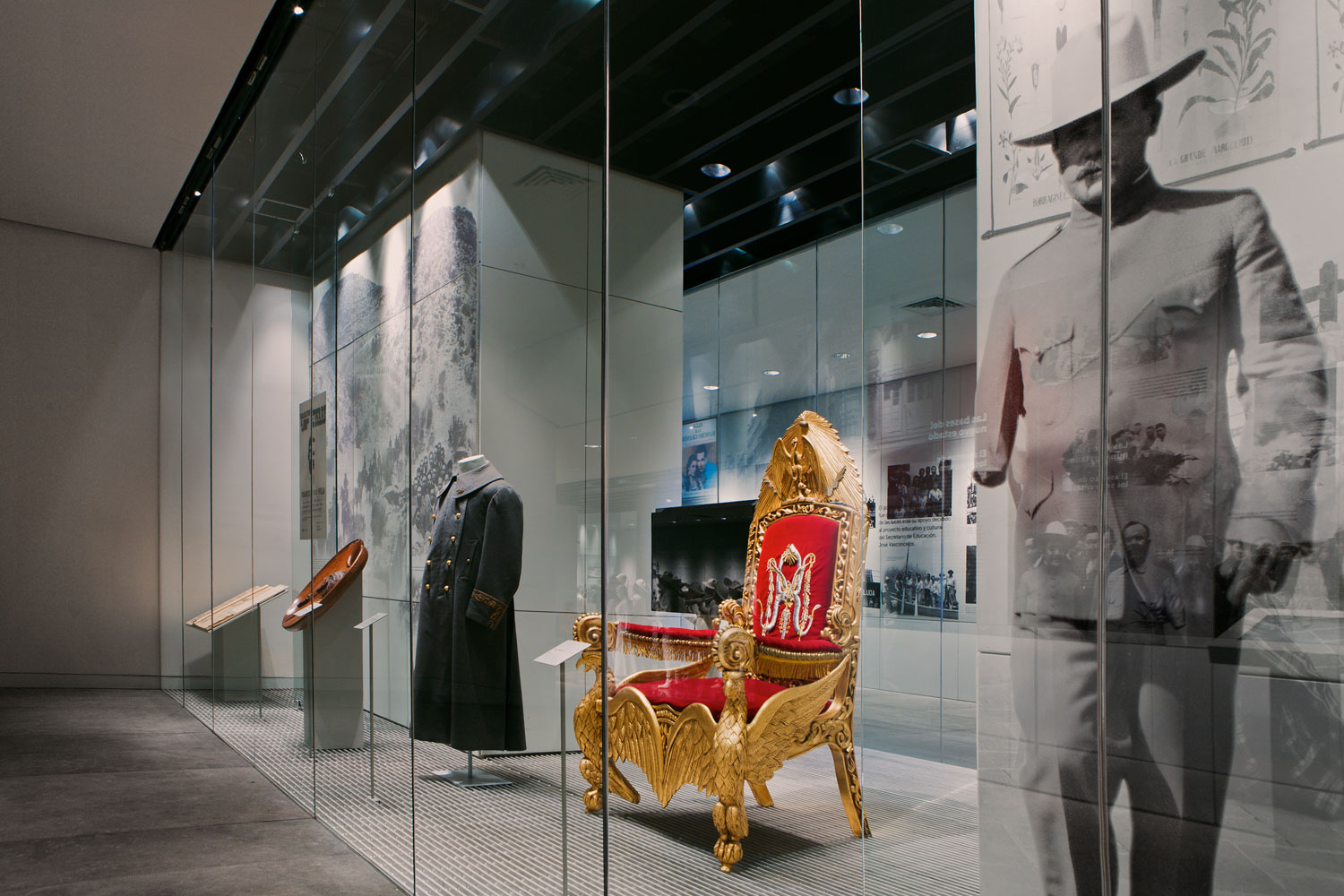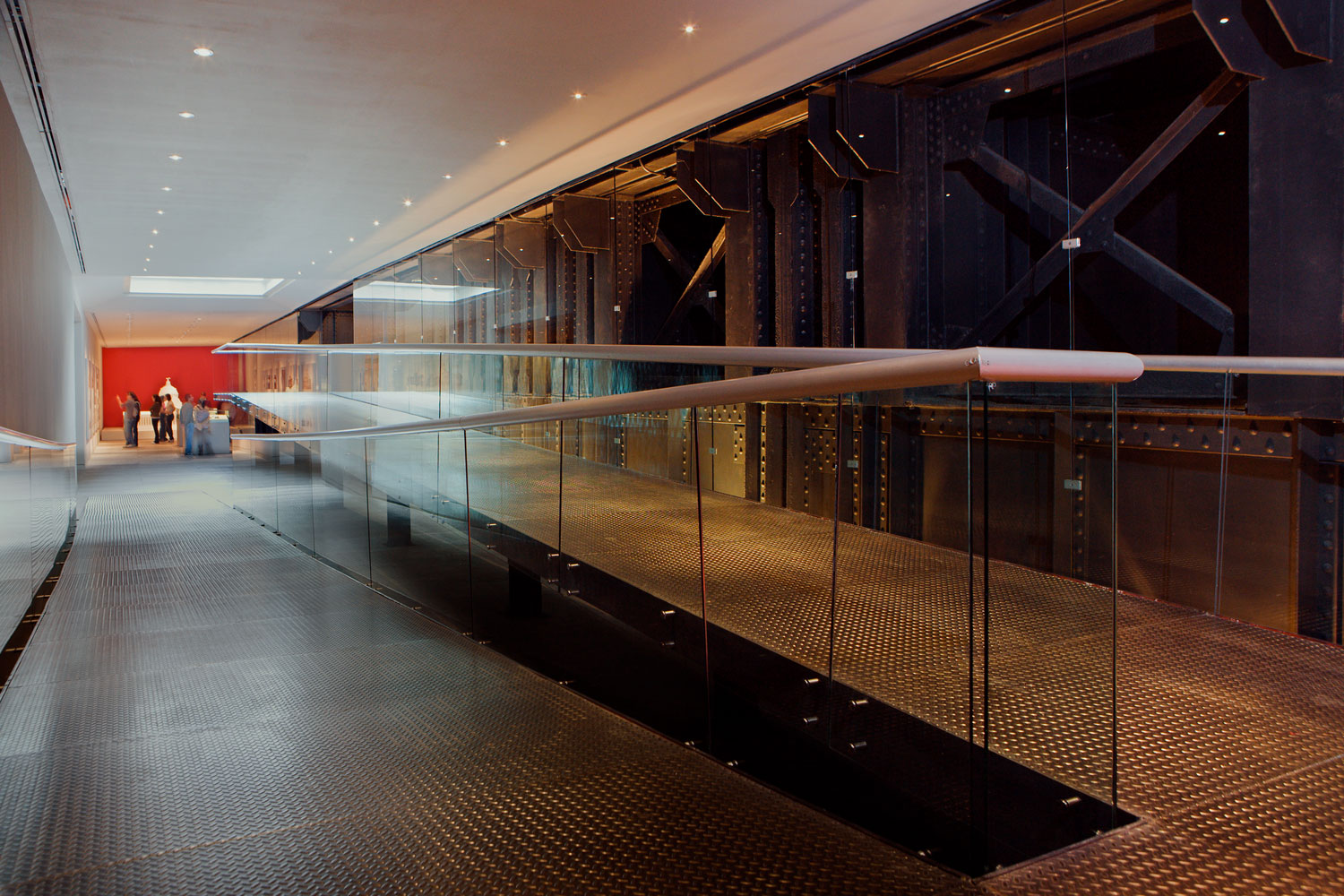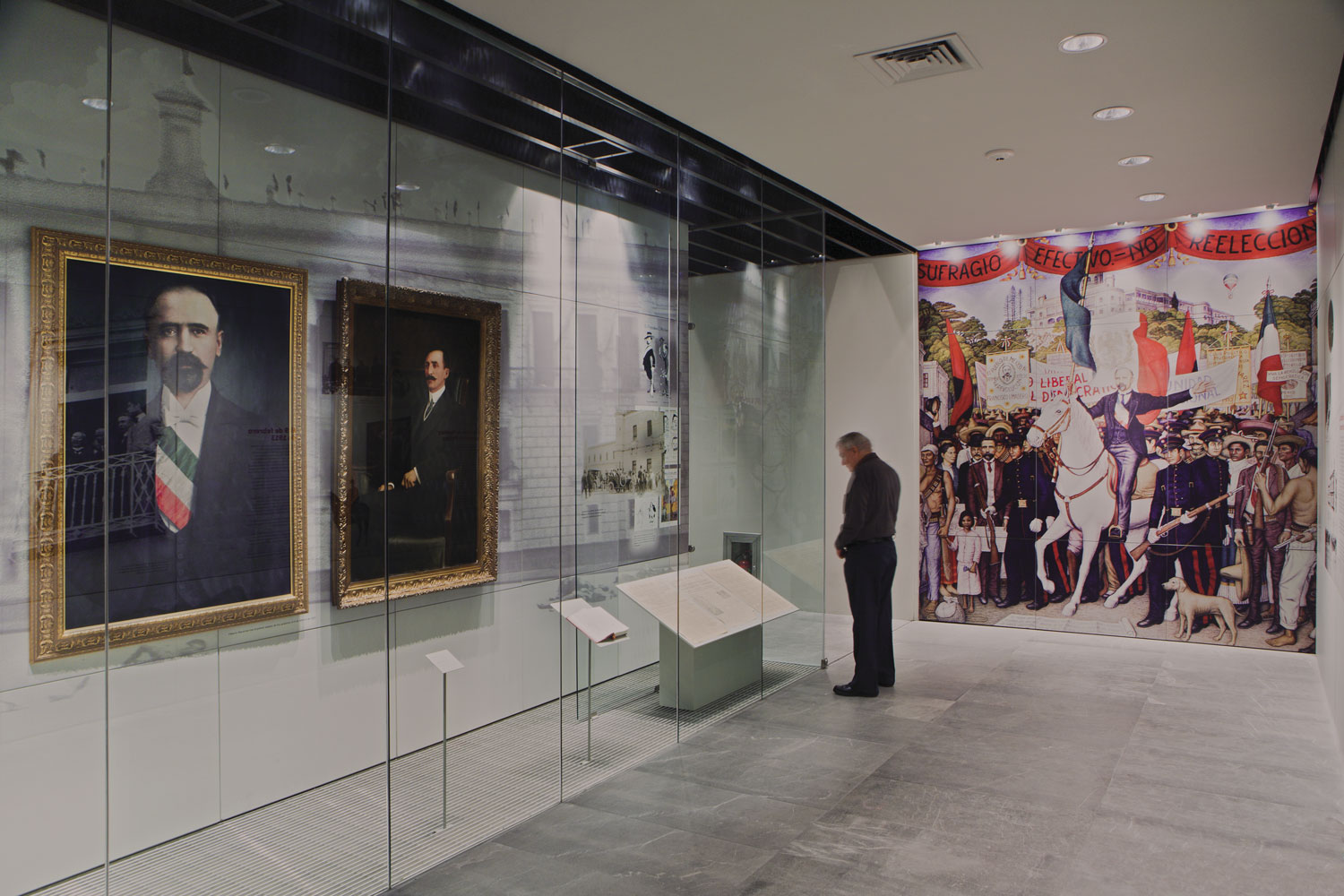Authority for Public Space of Mexico City | Monument to the Revolution, Plaza de la República, Mexico City
About the project
Founded in 1986, the museum is located under the Monument to the Revolution and Plaza de la República. With the centenary of the start of the Mexican Revolution in 2010, the government of Mexico City decided to expand and renovate the museum as part of the remodeling works of the plaza. The permanent exhibition presents the history of the Mexican Revolution organized into eight thematic-chronologic units, ranging from the time of the Reform to the end of the presidential period of Lázaro Cárdenas. It is narrated with multiple historical objects and documents selected from the museum collection, which are complemented by extensive graphical information, videos and interactive modules.
The museum is composed of two sections of symmetrical plans that extend throughout a long central axis. The first, located under the monument, houses a lobby and customer services; the second, under the plaza and one level lower than the lobby, houses the exhibitions and the museum operating services. The existing load bearing walls in this section provided the guidelines for the design of the exhibition space, resolved through a sequence of long bays that run perpendicular the the central axis.
The main exhibition hall is composed of four bays, separated at the center to form eight exhibition units. Each unit is presented in parallel, to one side by the graphical history of the subject and, on the other by representative objects displayed in large floor-to-ceiling vitrines, designed to integrate the architectural adaptation and the exhibition structures in a single unified expression.
At the main access to the hall a large video installation is presented featuring scenes from the collective imagery of the revolution. From there visitors move on to the first sight of a group of sculptural figures that represent the men and women who went on to become “la bola” or “the mob”, which constitutes the central element of the exhibition as well as an homage to the anonymous fighters who made the revolution.



